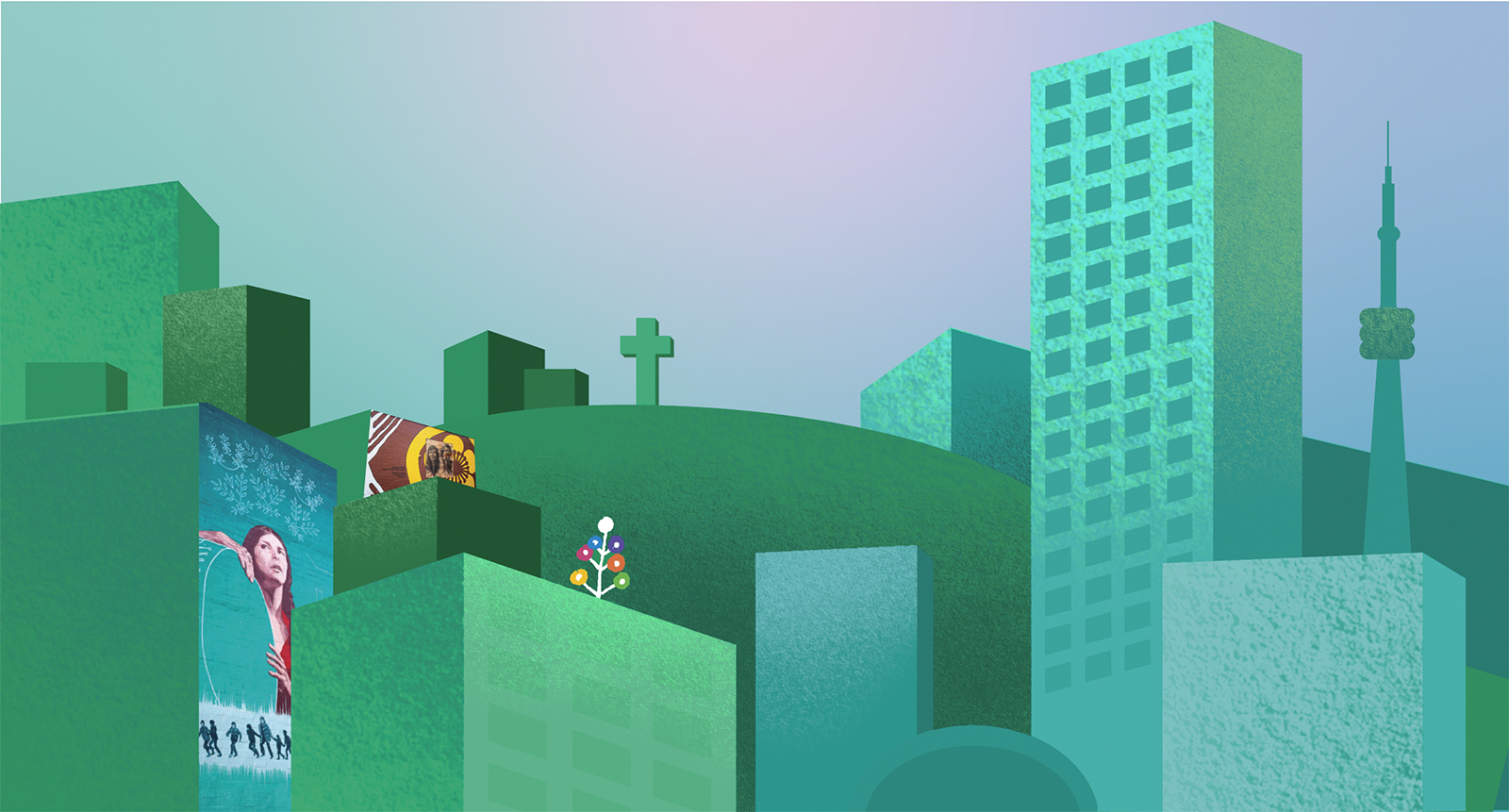Reflecting on the place of visual art in the Montreal streetscape
Wherever you go on the island of Tiohtià:ke (Montreal), you will find street art. Regardless of the borough or neighbourhood, you are bound to stumble upon a sculptural installation, mural or the good ol’ reliable mosaics and vitrines in various metro stations. It’s what gives the city its charm and personality.
Other than during the annual MURAL festival, I rarely think about the street art that I see nearly every day. However, upon a recent weekend trip to Tkaronto (Toronto) I began to think about street art a lot more, primarily due to the fact that I did not really see any.
I’ve been told by many friends, and via a thorough Google search, that Toronto has plenty of wonderful street art. And yet, during my three-day venture through numerous districts and boroughs of Toronto, I did not come across a single one. Except, that is, for the renowned 3D TORONTO sign, situated in Nathan Phillips Square.
In 2018, the sign, which is very popular among tourists, was modified to include the Medicine Wheel, an Indigenous symbol that represents various spiritual concepts, including health. The last time I had seen the installation, I was quite young and I did not think much of it, as it was just a large illuminated “Toronto.” This time, I began to reflect on the place of the installation in the city, the inclusion of the Medicine Wheel, and Indigenous representation in the Montreal streetscape.
Other than the Justice for Missing and Murdered Indigenous Women mural, by artists Fanny Aisha, Guko and Monk-e, commissioned by Missing Justice, a solidarity collective working to eliminate violence and discrimination against Indigenous women in Quebec, I have yet to come across street art by Indigenous artists or for Indigenous people. However, there are plenty… just not in areas frequented by most.
So, what does this mean about representation in Montreal? Two large murals of Leonard Cohen are placed at two of the busiest intersections in the city, but Indigenous art work, like Skawennati’s The Celestial Tree, is situated on Pine Ave. and McTavish St., an intersection less frequented.
Shanna Strauss’ 2017 work, Ellen Gabriel & Mary Two Axe Earley, Tiohtià:ke unceded Haudenosaunee territory, pays homage to Mohawk activists Ellen Gabriel and Mary Two Axe Earley. Situated on St-Antoine St. West, in Saint-Henri, the mural features a portrait of the women and was created in solidarity with Indigenous women from Tiohtià:ke, in an effort to resist colonial violence and fight for the recognition of Indigenous rights.
Towards the downtown core of Montreal, at the intersection of Atwater Ave. and Lincoln Ave., one can find Meky Ottawa’s 2018 mural, Hommage à Alanis Obomsawin. As the name states. the work is an homage to Alanis Obomsawin, an activist committed to the defense of First Nations and the rights of Indigenous children. The mural consists of a portrait of Obomsawin, and numerous children holding hands.
Ottawa, an Atikamekw artist, collaborated with MU Montreal, in creating the piece. MU is a project that aims to turn Montreal into an open air museum. Since their conception in 2007, the group has produced over 120 murals.
At the McCord museum, one might stumble upon Inuk artist Jusipi Nalukturuk’s 1936 work, Inukshuk. The sculptural installation, owned by the McCord Museum, is an ode to Indigenous ancestry. The work consists of over 200 stones and was initially assembled in Nunavik.
Even upon further research, I am shocked to discover the plethora of hidden works by Indigenous artists within the Montreal art milieu. Each work offers a piece of history that is not taught in the classrooms and aims to maintain both personal and collective histories that have otherwise been destroyed by colonial violence.
Considering the diversity of artists featured at street art festivals, like MURAL, it is infuriating that Indigenous people are not properly represented on their own lands and in their streets, to say the least. With artists from Colombia, the Netherlands, and settlers being given the opportunity to showcase their works at one of Montreal’s largest art festivals, it certainly raises questions where representation and attribution are concerned.
I am left wondering, does it really count as representation if marginalized artists are offered a place to show their work that is virtually hidden from the majority of the population? It seems to me like yet another inadequate attempt at reconciliation.
Further information about Montreal street art can be found at Art Public Montreal, at artpublicmontreal.ca, and at MU Montreal at mumtl.org.
Graphic by @sundaeghost.




